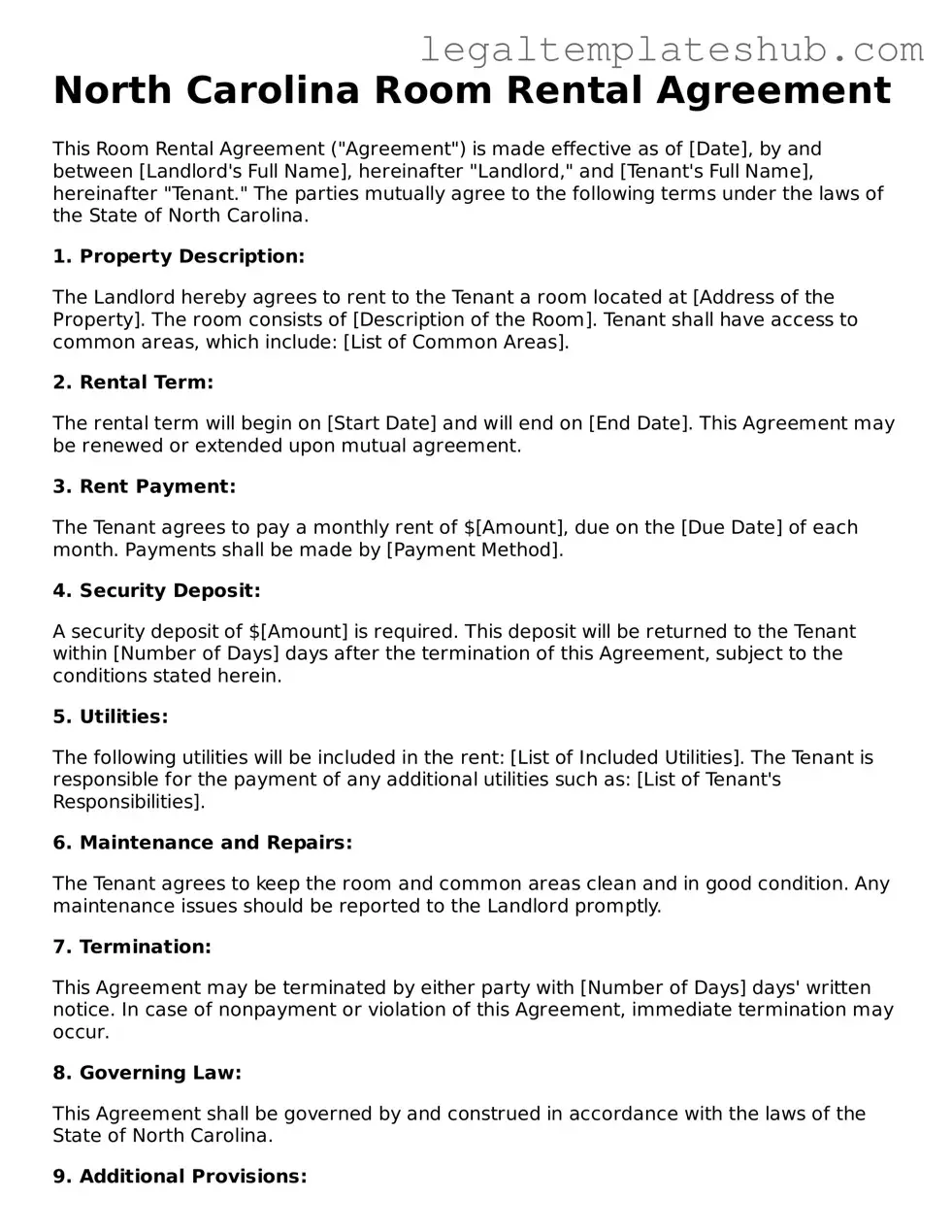Printable Room Rental Agreement Document for North Carolina
The North Carolina Room Rental Agreement is a legal document that outlines the terms and conditions for renting a room in the state of North Carolina. This agreement serves to protect both the landlord and tenant by clearly defining responsibilities, payment details, and other important aspects of the rental arrangement. For those looking to rent a room, filling out this form is a crucial step; click the button below to get started.
Access Editor
